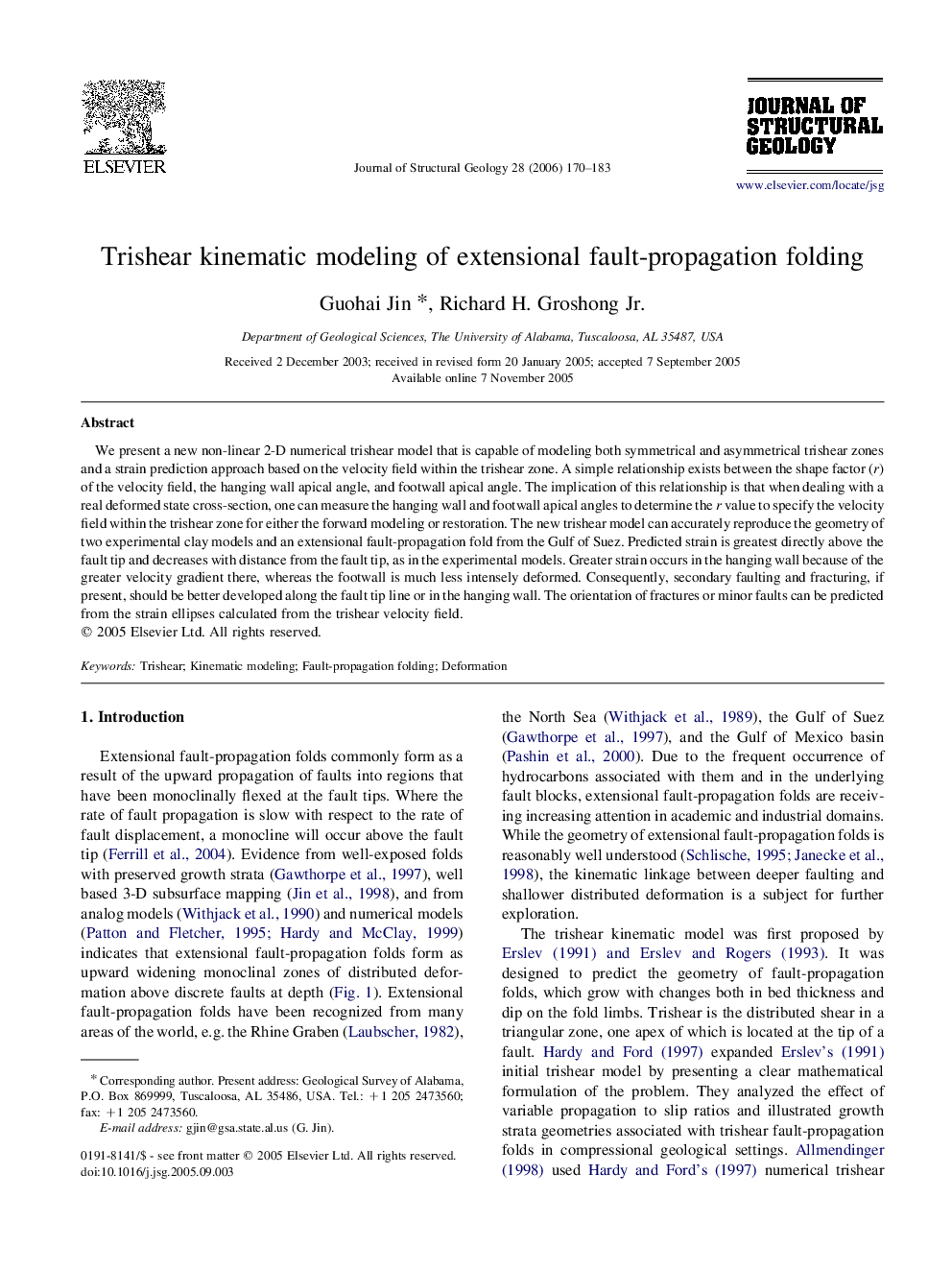| Article ID | Journal | Published Year | Pages | File Type |
|---|---|---|---|---|
| 4734085 | Journal of Structural Geology | 2006 | 14 Pages |
We present a new non-linear 2-D numerical trishear model that is capable of modeling both symmetrical and asymmetrical trishear zones and a strain prediction approach based on the velocity field within the trishear zone. A simple relationship exists between the shape factor (r) of the velocity field, the hanging wall apical angle, and footwall apical angle. The implication of this relationship is that when dealing with a real deformed state cross-section, one can measure the hanging wall and footwall apical angles to determine the r value to specify the velocity field within the trishear zone for either the forward modeling or restoration. The new trishear model can accurately reproduce the geometry of two experimental clay models and an extensional fault-propagation fold from the Gulf of Suez. Predicted strain is greatest directly above the fault tip and decreases with distance from the fault tip, as in the experimental models. Greater strain occurs in the hanging wall because of the greater velocity gradient there, whereas the footwall is much less intensely deformed. Consequently, secondary faulting and fracturing, if present, should be better developed along the fault tip line or in the hanging wall. The orientation of fractures or minor faults can be predicted from the strain ellipses calculated from the trishear velocity field.
